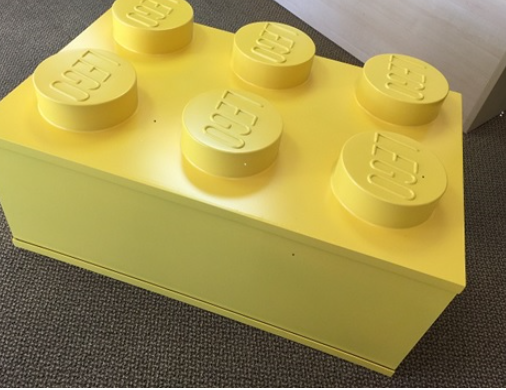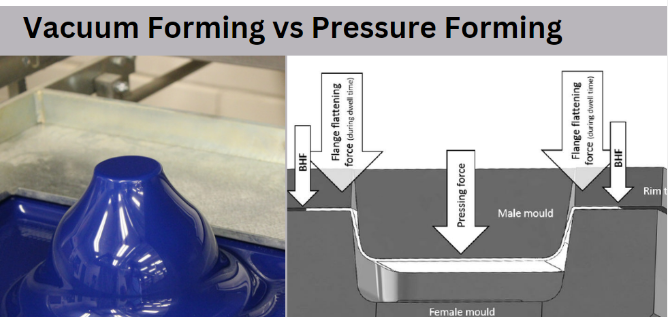Vacuum forming uses a single-sided mold and vacuum, while pressure forming employs air pressure for higher detail and quality.
Introduction to Plastic Forming Methods
Plastic forming is a cornerstone in the manufacturing industry, enabling the production of a vast array of products used in various sectors. This method involves reshaping plastic materials into desired forms through different processes, each suited to specific applications and material types.
Overview of Plastic Forming
- Processes: Common plastic forming methods include injection molding, blow molding, thermoforming, vacuum forming, and pressure forming. Each method has distinct mechanisms and is chosen based on the product’s requirements.
- Injection Molding: Ideal for high-volume production of plastic parts with high precision.
- Blow Molding: Used for creating hollow plastic products such as bottles.
- Thermoforming: Involves heating plastic sheets and molding them over a template.
- Materials Used: Plastics like Polyethylene (PE), Polypropylene (PP), Polycarbonate (PC), and Polyvinyl Chloride (PVC) are commonly used. Each material has unique properties affecting the product’s quality and durability. For instance, PC’s impact resistance makes it ideal for protective gear.
- Technology Advancements: Modern advancements include computer-aided design (CAD) and automation, which enhance precision and speed, thereby increasing efficiency and reducing labor costs.
Importance in Manufacturing
- Customization and Flexibility: Plastic forming allows for high customization, meeting specific design and functionality needs.
- Cost-Effectiveness: Compared to other materials like metal, plastic is generally more cost-effective. It’s also efficient in terms of energy usage, especially in processes like injection molding.
- Production Efficiency: High-speed production is possible, especially in processes like injection molding, where cycle times can be as low as a few seconds per part.
- Durability and Quality: Plastic products can be highly durable, resistant to corrosion, and lighter than metal counterparts. The choice of material significantly impacts the product’s lifespan and performance.
- Environmental Considerations: While plastic usage poses environmental concerns, advancements in recyclable and biodegradable plastics are making the industry more sustainable.
Understanding Vacuum Forming
Vacuum forming stands as a simplified version of thermoforming, where a sheet of plastic heats up to a pliable forming temperature. Manufacturers then stretch it onto a single-surface mold and vacuum out the air between the sheet and the mold, causing the plastic to conform to the mold’s shape.
Process and Techniques
- Heating: The plastic sheet heats uniformly to ensure proper stretching and molding. The temperature varies based on the plastic type, with common materials including PVC, PET, and acrylic.
- Molding: Once heated, the sheet places over the mold. A vacuum applies to remove air and ensure the sheet fits tightly to the mold.
- Cooling and Release: After forming, the plastic cools and solidifies into its final shape. The part then removes from the mold for further processing or finishing.
- Design Flexibility: Vacuum forming supports complex shapes and fine details. The molds can be of various materials, including wood, resin, or aluminum, depending on the production volume and cost considerations.
Applications and Advantages
- Wide Application Range: Useful in making product packaging, automotive parts, and signage. It’s particularly popular in the packaging industry for creating blister packs and clamshells.
- Cost Efficiency: The process is more cost-effective for small to medium production runs due to lower mold and tooling costs compared to other forming methods.
- Speed and Flexibility: Offers quick turnaround times and easy modification of designs, which is beneficial for prototyping and custom products.
- Material Efficiency: Generates less waste as excess material from the forming process can be recycled and reused.
Limitations
- Material Restrictions: Limited to thinner plastics, which may not be suitable for all applications, especially where high strength or rigidity is required.
- Detail Limitations: While it supports detailed designs, it’s less precise than other methods like injection molding, especially for intricate features or sharp corners.
- Size Constraints: Larger parts are more challenging to produce due to limitations in equipment size and uniform heating requirements.
- Wall Thickness Variability: The stretching process can lead to uneven wall thickness, especially in deeper or more complex molds.
Exploring Pressure Forming
Pressure forming is an advanced plastic forming technique where a plastic sheet is heated and then forced against a mold by high-pressure air. This method bridges the gap between vacuum forming and injection molding, offering higher detail and better finish quality.
Process and Techniques
- Heating and Pre-stretch: The plastic sheet heats to a pliable temperature. Pre-stretching the material ensures uniform thickness during forming.
- High-Pressure Application: Air pressure, significantly higher than in vacuum forming, forces the sheet into the mold, ensuring high detail and texture fidelity.
- Cooling and Ejection: The formed plastic cools down and solidifies before being ejected from the mold.
- Precision and Detail: Pressure forming allows for greater detail than vacuum forming, including sharp edges, undercuts, and intricate textures.
Applications and Advantages
- Versatile Applications: Ideal for medical equipment, electronic housings, and retail packaging where detail and aesthetics are essential.
- High Quality and Aesthetics: Produces parts with excellent surface quality, comparable to injection molding, suitable for visible components.
- Cost-Effective for Medium Volumes: Offers a lower-cost alternative to injection molding for medium-volume production runs, balancing quality and cost.
- Material Options: Compatible with a wide range of thermoplastics, including high-impact polystyrene (HIPS), ABS, and polycarbonate.
Limitations
- Higher Cost Than Vacuum Forming: Involves higher tooling and operational costs compared to vacuum forming, making it less economical for small production runs.
- Limited to Thinner Sheets: Generally works with thinner sheets, limiting the use for applications requiring thicker, more robust materials.
- Size Limitations: Like vacuum forming, it has size constraints, particularly with larger or deeper parts where achieving uniform pressure can be challenging.
- Energy Consumption: The process consumes more energy due to the high-pressure air requirements, impacting overall efficiency and operational costs.

Comparative Analysis
Comparing vacuum and pressure forming is essential to understand their capabilities and limitations. Both methods have unique characteristics that make them suitable for different applications in plastic manufacturing.
Comparing Vacuum and Pressure Forming
- Process Complexity: Vacuum forming is simpler, making it more accessible for smaller operations. Pressure forming, while more complex, offers higher detail and precision.
- Cost Implications: Vacuum forming generally costs less in terms of tooling and setup, ideal for smaller production runs. Pressure forming, due to its complexity and equipment requirements, incurs higher costs, justifiable for medium production volumes where detail is crucial.
- Material Usage: Both methods work with a range of thermoplastics, but pressure forming is better suited for materials that require finer detailing.
- Quality of Finish: Pressure forming achieves a higher-quality finish with greater detail and texture fidelity compared to vacuum forming.
- Production Speed and Efficiency: Vacuum forming is typically faster and more energy-efficient due to its simpler setup and process. Pressure forming, while slower, compensates with higher-quality outputs.
- Applications: Vacuum forming is widespread in packaging, automotive parts, and general plastic products. Pressure forming finds its niche in high-end applications like medical device housings, electronic enclosures, and components where aesthetic and fine details are paramount.
Decision Factors: Choosing Between the Two
- Production Volume and Cost: For low to medium volume production and cost constraints, vacuum forming is more viable. Pressure forming suits medium volumes where the cost can be offset by the need for higher quality and detail.
- Detail and Aesthetics Requirements: If the project requires high-quality finishes and intricate details, pressure forming is the better choice.
- Material Considerations: The choice of plastic material might dictate the method. Some materials may only be suitable for a specific process due to their properties under different forming conditions.
- Prototype and Custom Work: For prototyping and custom products, vacuum forming offers flexibility and quick turnaround times.
- Environmental and Energy Concerns: Vacuum forming is more energy-efficient, making it a better choice for environmentally conscious projects.



